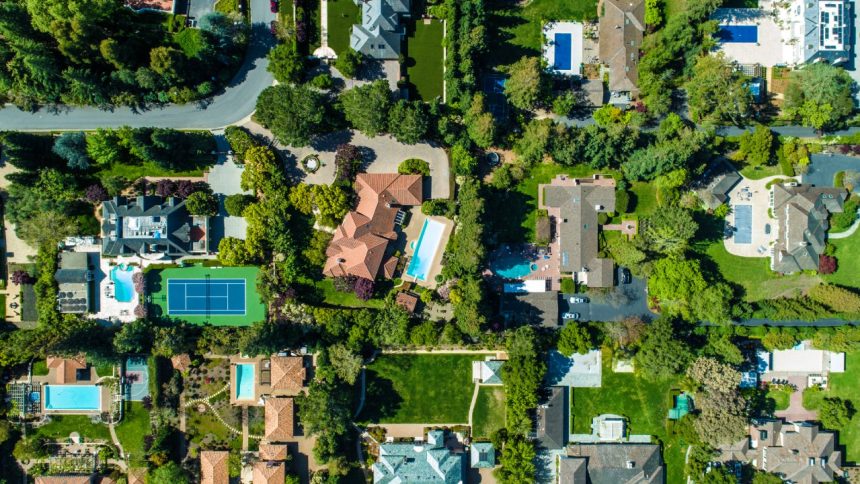Our writers and editors used an in-house natural language generation platform to assist with portions of this article, allowing them to focus on adding information that is uniquely helpful. The article was reviewed, fact-checked and edited by our editorial staff prior to publication.
Key takeaways
- A 7/1 ARM is a type of mortgage loan that starts with a fixed interest rate for the first seven years, and then adjusts annually thereafter.
- The initial fixed-rate on a 7/1 ARM can be lower than a traditional fixed-rate mortgage, making it appealing to those looking for smaller monthly payments.
- 7/1 ARMs can be a good option for those planning to sell their home or refinance within the first seven years, but may not be suitable for those planning to stay in their home long-term or who are not prepared for potential rate increases.
Around 8 percent of U.S. households have adjustable-rate mortgages. One of the most popular types is the 7/1 ARM. These may be a good fit for borrowers who plan to stay in their homes for only a few more years or who expect interest rates to fall over time.
What is a 7/1 ARM?
A 7/1 adjustable-rate mortgage (ARM) starts with a fixed interest rate for the first seven years and then adjusts annually afterward.
This home loan combines features from both fixed-rate and adjustable-rate mortgages. Its primary allure lies in its lower starting interest rate compared to fixed-rate mortgages, which can lead to lower initial monthly payments.
Once the fixed-rate period ends, the interest rate can fluctuate — up or down — depending on market conditions. This flexibility can be a double-edged sword: while falling rates could lead to lower payments, rising rates may increase your payments. The potential for such changes can make a 7/1 ARM an appealing option for those intending to sell their home or refinance to a fixed-rate mortgage within the first seven years.
How does a 7/1 ARM work?
If you took out a 7/1 adjustable-rate mortgage on April 1, 2023, the first rate adjustment would happen on April 1, 2030 — that is, seven years after you closed on the loan.
When the interest rate of an ARM adjusts, it will be set to a new rate, typically based on a benchmark or index, plus an additional few percentage points (called a margin). Your loan documents will tell you what index and margin are used.
Commonly used indexes for ARMs are the 11th District cost of funds index (COFI) and the Secured Overnight Financing Rate (SOFR).
Usually, the loan document will also outline a minimum and maximum rate, as well as a limit on how much the rate can adjust at one time. This helps reduce the shock when interest rates reset for the first time after the initial seven-year fixed-rate period.
Example of a 7/1 ARM
Let’s say you buy a $400,000 home, putting down 20 percent and financing the rest with a $320,000 7/1 ARM. It has an initial rate of 6 percent, a minimum rate of 5 percent, a maximum rate of 10 percent, and a maximum change of 2 percent per adjustment.
Your starting payment is $1,918.56.After seven years, the rate (and your payment) will change each year until you pay off the loan. When the first adjustment period comes, if rates have gone up, the loan rate could increase up to 8 percent. Conversely, if rates have decreased, your rate could decrease by 1 percent, down to 5 percent. A year later, it could rise again by as much as 2 percent or fall by 2 percent. Your highest monthly payment, in this scenario, would be $2,625.68.
Let’s assume the interest rate rises 1 percent each year. Your payments would be as follows:
| Payment Number | Interest Rate | Monthly Payment |
|---|---|---|
| 1 | 6% | $1,918.56 |
| 84 | 7% | $2,093.75 |
| 96 | 8% | $2,270.48 |
| 108 | 9% | $2,448.02 |
| 120 | 10% | $2,625.68 |
| 132 | 10% | $2,625.68 |
Remember, each monthly payment you make covers all interest that accrued since your last payment, plus some principal. That means that an increase in the loan’s interest rate will lead to an increase in your monthly loan payment. An ARM calculator can help you figure out how your payment could change over time.
Pros and cons of a 7/1 adjustable-rate mortgage
Pros of a 7/1 ARM
- Cheaper at first: Interest rates for a 7/1 ARM can be a full percentage point below a 30-year fixed mortgage. A lower interest rate means lower monthly payments.
- The payments might get even cheaper: If interest rates are falling, your monthly payment will also decline after the initial period and potentially during future resets.
Cons of a 7/1 ARM
- Rising rates could cost you more: Long-term interest rates are hard to predict. Once your fixed introductory period expires, you might face higher or lower interest rates. If rates have risen, your payment will increase.
- Complexity: There are more moving parts to an adjustable mortgage than a fixed one. Rate caps, indexes, resets — this can be pretty technical stuff for the average homeowner.
- Interest-only trap: With some ARMs, known as “interest-only” ARMs, your initial payments go toward only the loan interest and not the principal in the initial fixed-rate period. That can allow you to stretch your budget and lower your payment, but after the fixed period, your payments will be much higher to include the principal. If home values drop, you could find yourself underwater on the loan.
- Budgeting difficulties: A mortgage is often a household’s largest monthly expense. It can be challenging to budget for it once the rates start fluctuating.
7/1 ARM qualifications
Like any mortgage, ARMs have strict underwriting requirements. You’re committing to a long-term loan for a large amount, and the lender wants to make sure you repay the loan. In particular, you’ll need:
- At least a “fair” credit score, meaning 620
- A debt-to-income (DTI) ratio ideally no greater than 36% (some lenders will go up to 43%)
- At least a 3 percent down payment
In some ways, ARMs can be easier to qualify for than other loans. Their lower initial rates mean smaller payments, which can keep your debt-to-income ratio lower than with a fixed-rate loan that has a higher rate. Remember that your mortgage rate might increase down the road, possibly stretching your budget in the future.
Indeed, lenders will be aware of that — and they will consider a borrower’s capacity to handle interest rate increases when assessing them for a loan. So they may look especially closely at the stability of your gross income (and its potential to rise) and want your DTI to be on the lower side.
Current 7/1 ARM rates
Interest rates for 7/1 ARM loans, as well as for all mortgage types, constantly change. The average 7/1 ARM interest rate was 6.47 percent on Thursday, August 15, 2024, according to Bankrate’s survey of national lenders. To compare, the national average interest rate for 30-year fixed-rate mortgages was 6.56 percent for the same day. These rates and APRs are based on a 740 FICO credit score and an owner-occupied single-family home.
Other types of adjustable-rate mortgages
7/1 ARMs are just one type of ARM. Lenders offer many other adjustable-rate mortgages with different rate locks and adjustment periods. Other common options include:
- 10/1 ARM – These loans have a 10-year rate-lock, adjusting annually after that. They can be good for people who plan to stay in the home for a decade or more.
- 5/6 ARM – A 5⁄6 ARM loan has a 5-year rate lock and adjusts semi-annually afterward. They’re better for people who think rates are going to fall or who don’t plan to stay in the home long-term.
- 3/1 ARM – The loans have the shortest rate-lock period at three years, with annual adjustments after that. They’re usually popular with people who plan to sell their homes within a few years or are trying to get the lowest possible payment. They’re also a popular option among people who expect interest rates to drop within three years and are planning to refinance.
These are just a few examples of popular ARMs. Lenders are free to offer different terms, such as 15-year rate lock periods or letting borrowers select their own payment structure and schedule.
How to compare ARMs
When shopping for an ARM, the key details to look at include:
- The fixed-rate period: This is the first number in the ARM’s name. The shorter this period is, the lower the initial rate will typically be. However, if rates rise, the variable-rate period will be longer, exposing you to more risk. Typical fixed-rate periods are three years, five years and seven years.
- Adjustment intervals: This is the second number in the ARM’s name. It’s the frequency with which the rate will change after the fixed-rate period ends. The number “1,” meaning annual changes, is the most common number you’ll see here.
- Teaser rate: The initial interest rate offered in the fixed-rate period.
- Initial cap: This limits how much the rate can adjust immediately after the fixed-rate period ends, expressed in percentage points.
- Periodic rate cap: This is the limit on how much the rate can change at each adjustment date. It may be the same or different from the initial cap.
- Lifetime cap: This limits how much the interest rate can rise over the loan term.
- Payment cap: This limits the dollar amount the monthly payment can rise over the life of the loan.
- Minimum and maximum rate: These are the lowest and highest rates that your loan’s rate can adjust to.
- Minimum and maximum monthly payment: The inner and outer limits of your payments, giving you a sense of how high or low they could go.
7/1 ARM FAQ
-
The main distinction between an adjustable-rate mortgage and a fixed-rate loan lies in the interest rate structure. A fixed-rate loan locks in the interest rate when the mortgage closes and remains constant throughout the loan term. This consistency allows for predictable monthly payments.In contrast, an ARM typically starts with a lower interest rate than fixed-rate mortgages, but after a specified introductory period, the rate can go up or down. While ARMs often include caps that limit the maximum and minimum levels the interest rate can adjust, the potential for variable payments makes ARMs inherently more risky than fixed-rate loans.
-
7/1 ARMs typically offer a lower initial interest rate for the first seven years than fixed-rate mortgages. This can result in lower monthly payments at the beginning, which can be beneficial if you plan to move, refinance or earn a higher salary before the rate adjustment period begins. However, once the initial fixed-rate period is over, your interest rate and monthly payments can increase if market rates rise.
-
A 7/1 ARM can make sense in a few situations:If you plan to sell your home within seven years, it can be a great fit. You’ll benefit from the lower interest rate without worrying about the rate rising with each adjustment.
If you expect interest rates to decline over the next several years. If rates are lower than when you got your loan when the adjustment date comes, your loan rate could decrease, saving you money.
Additional reporting by Ashlee Tilford
Read the full article here
















